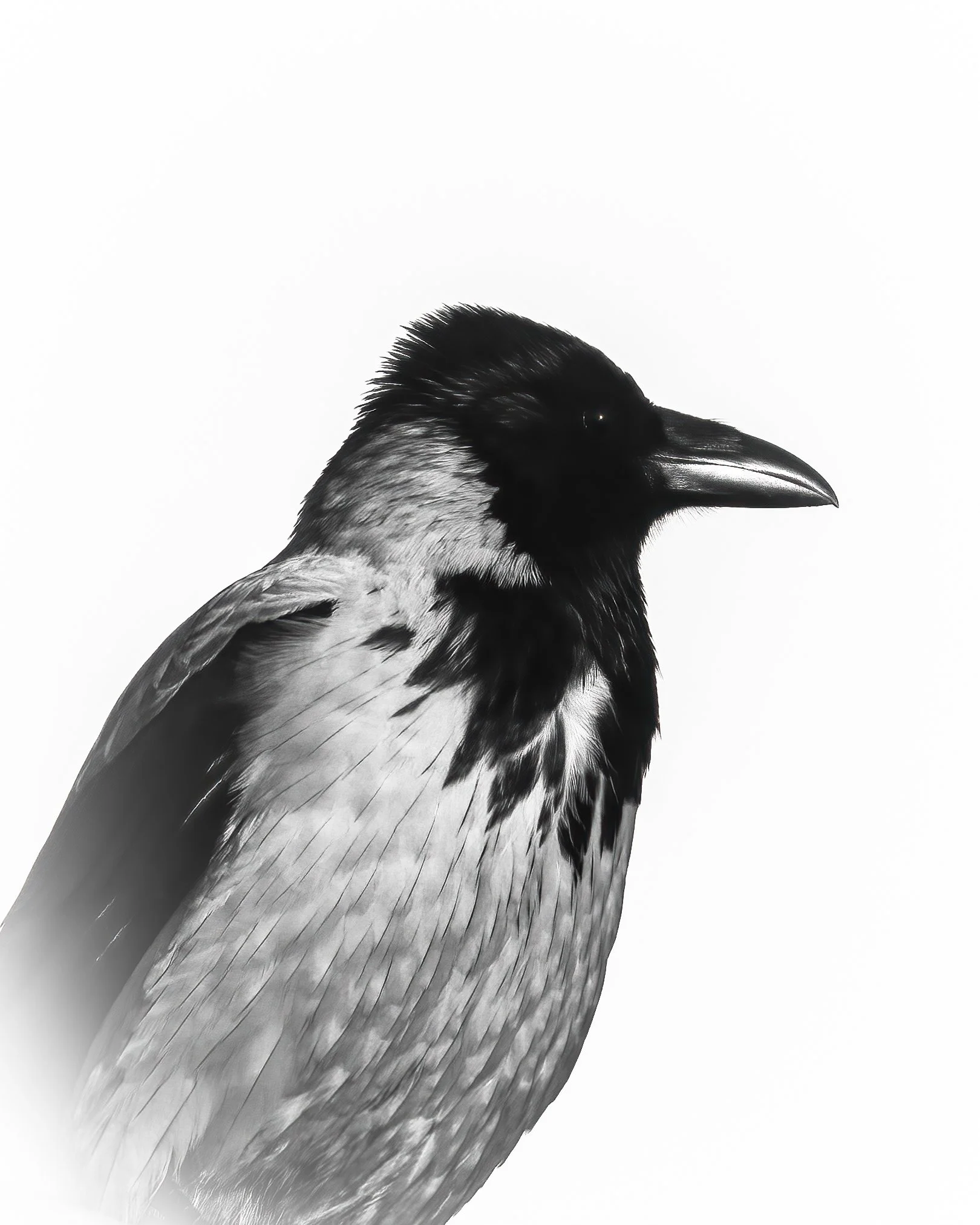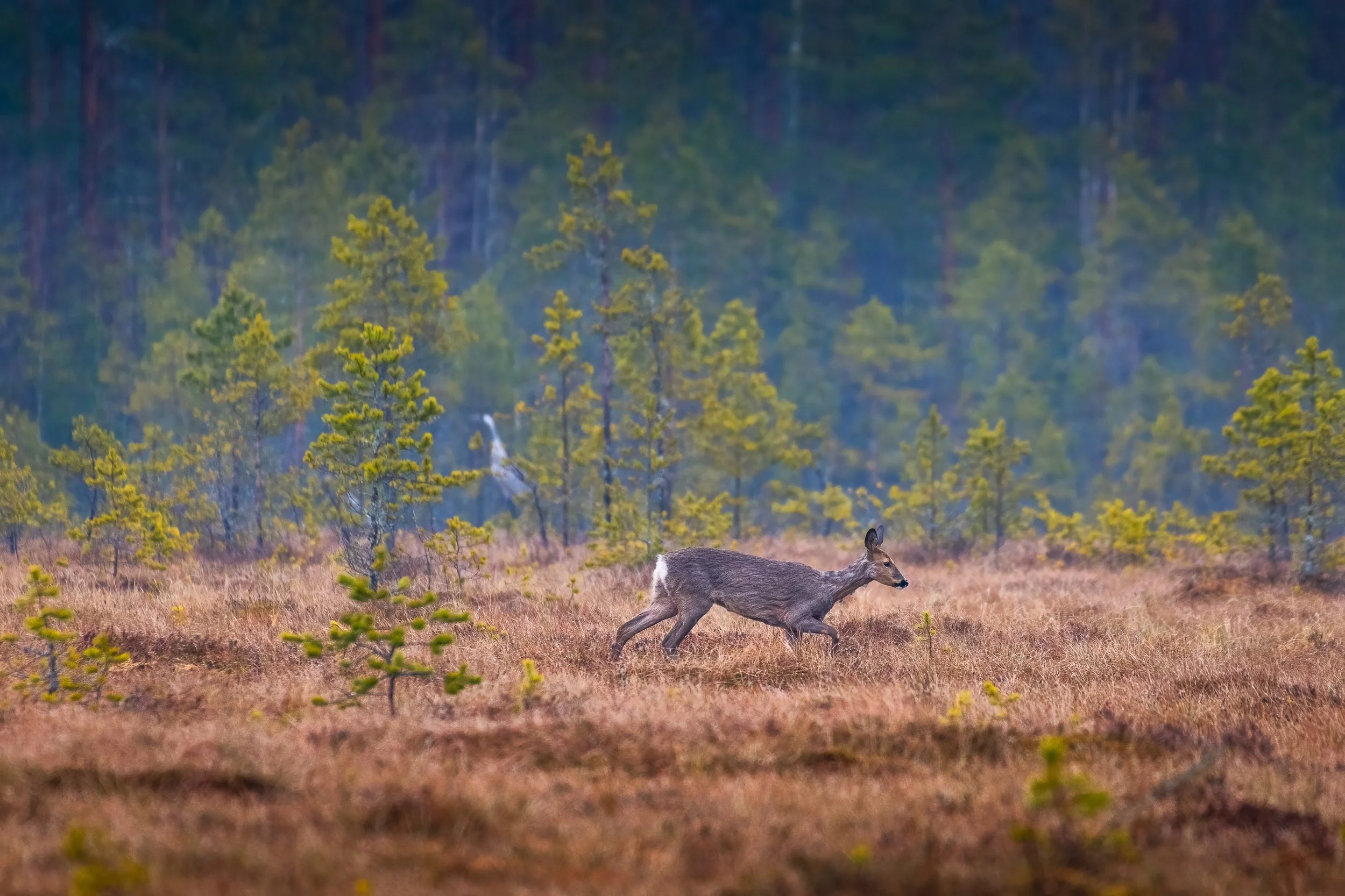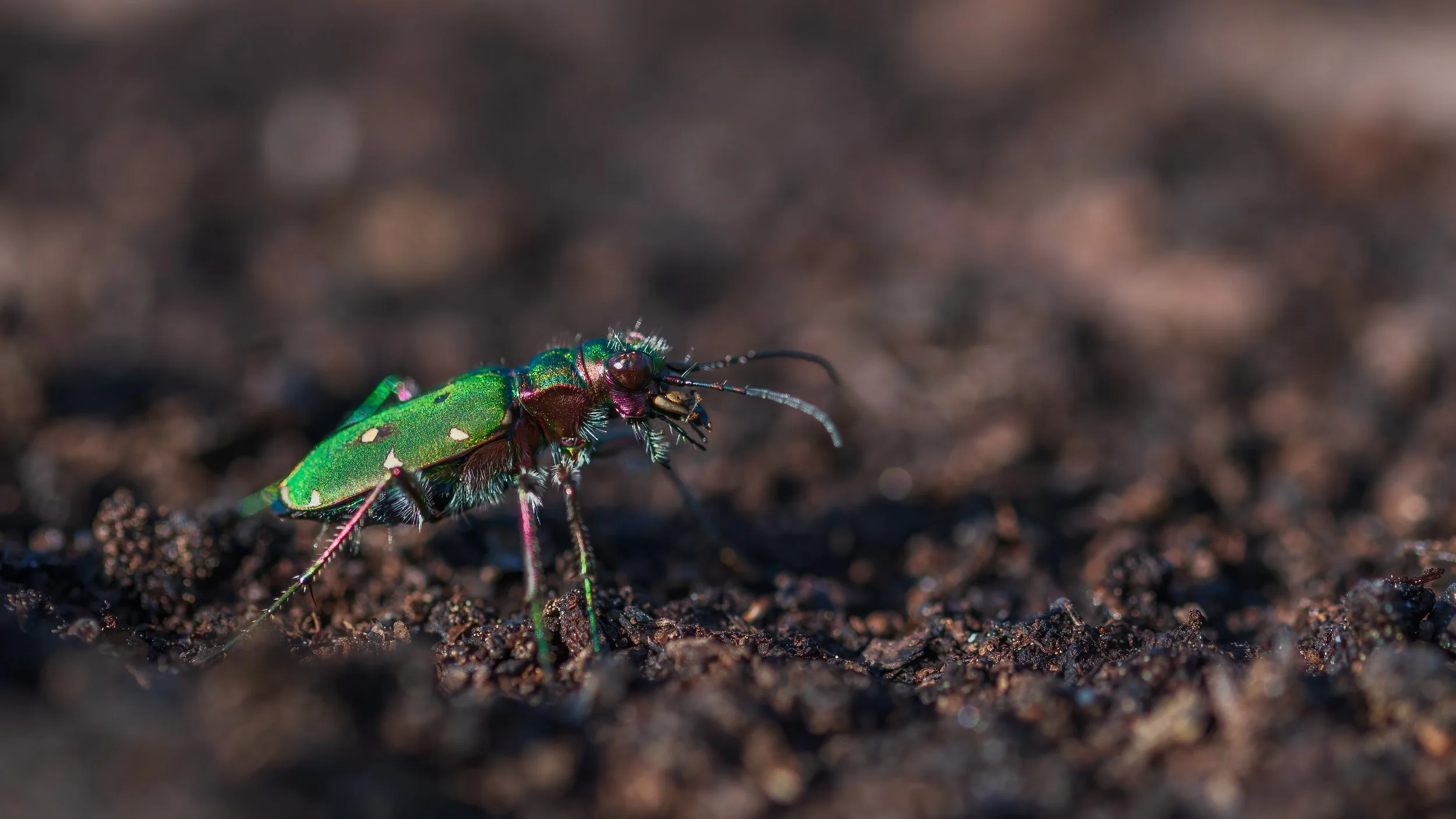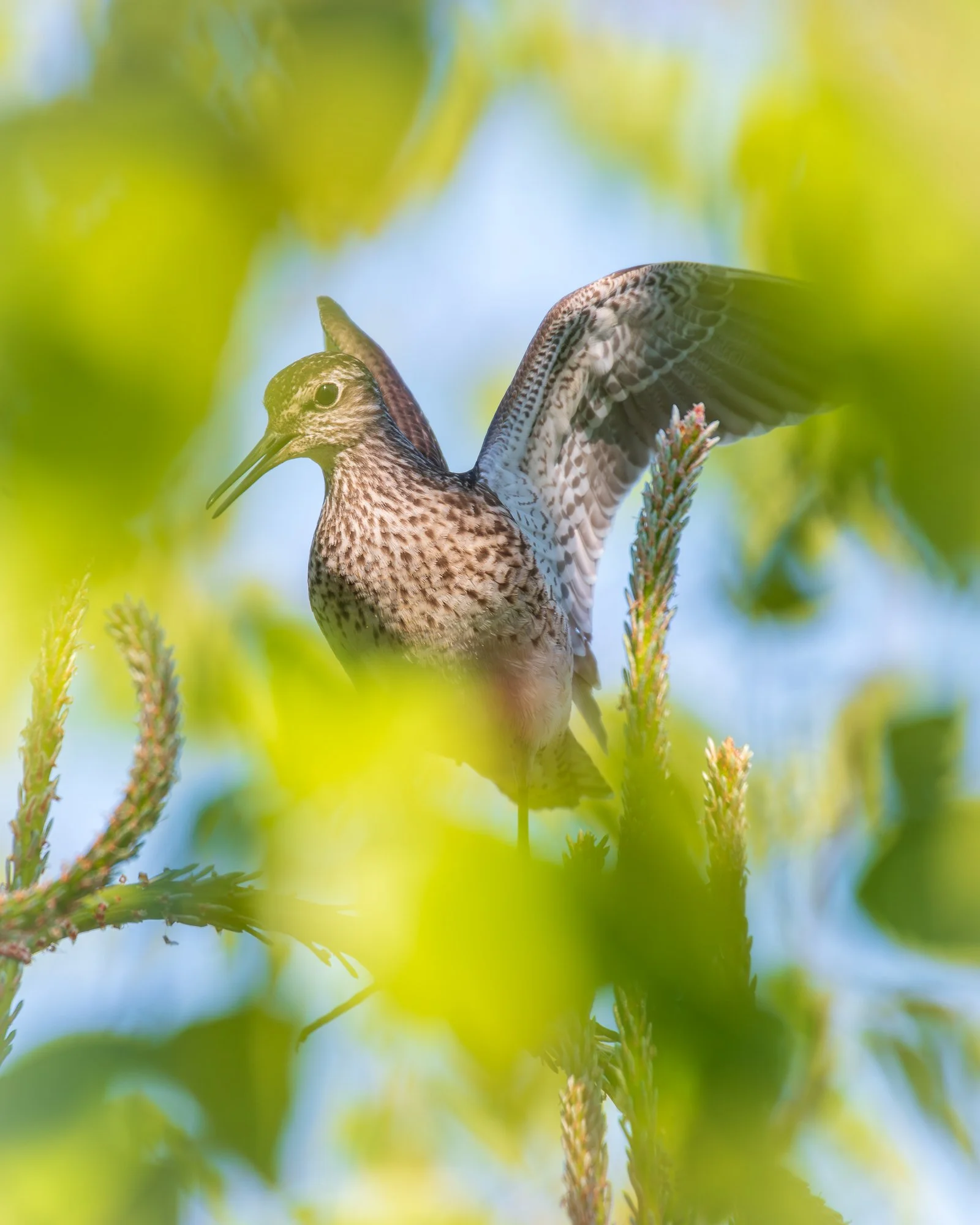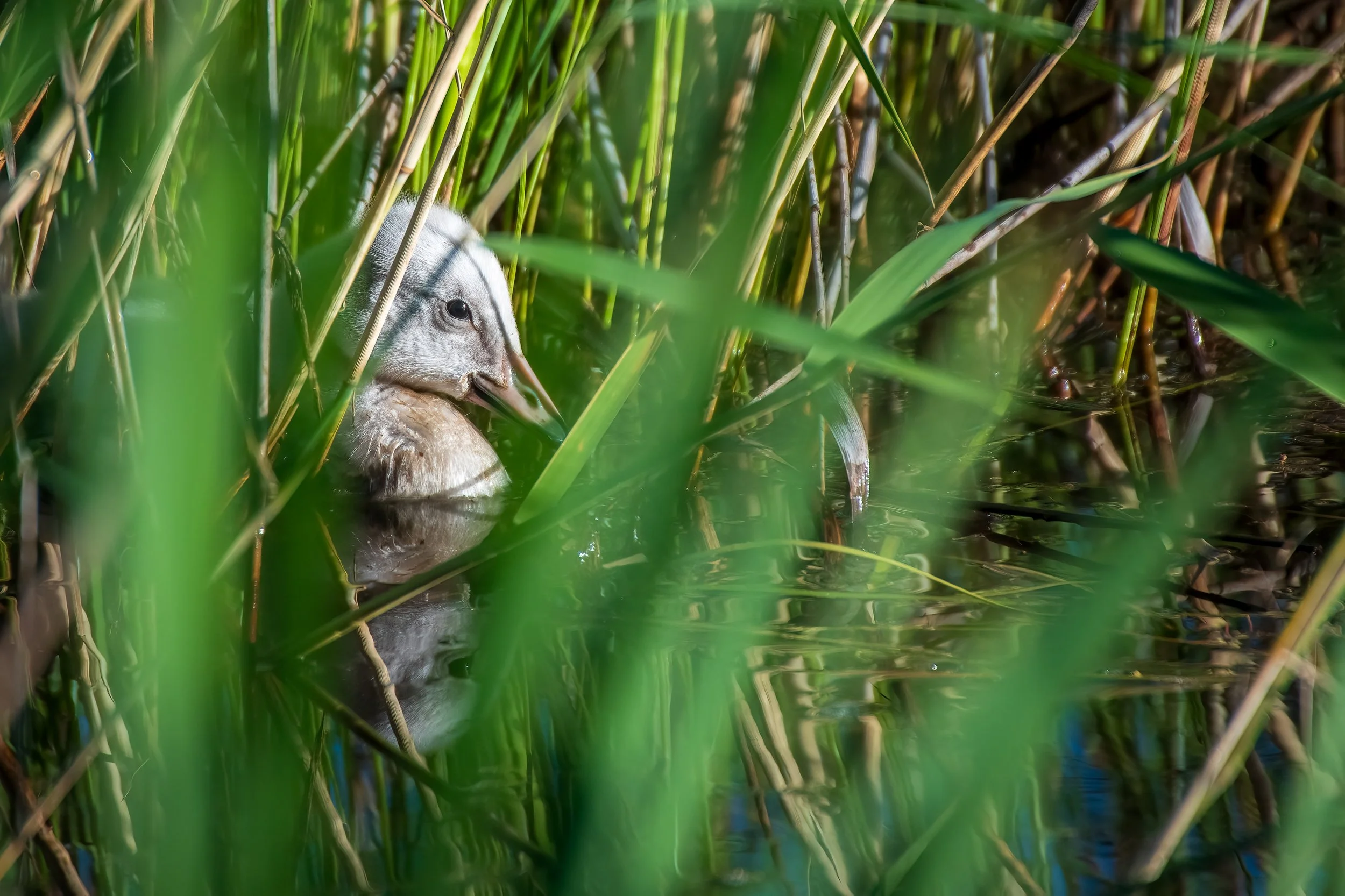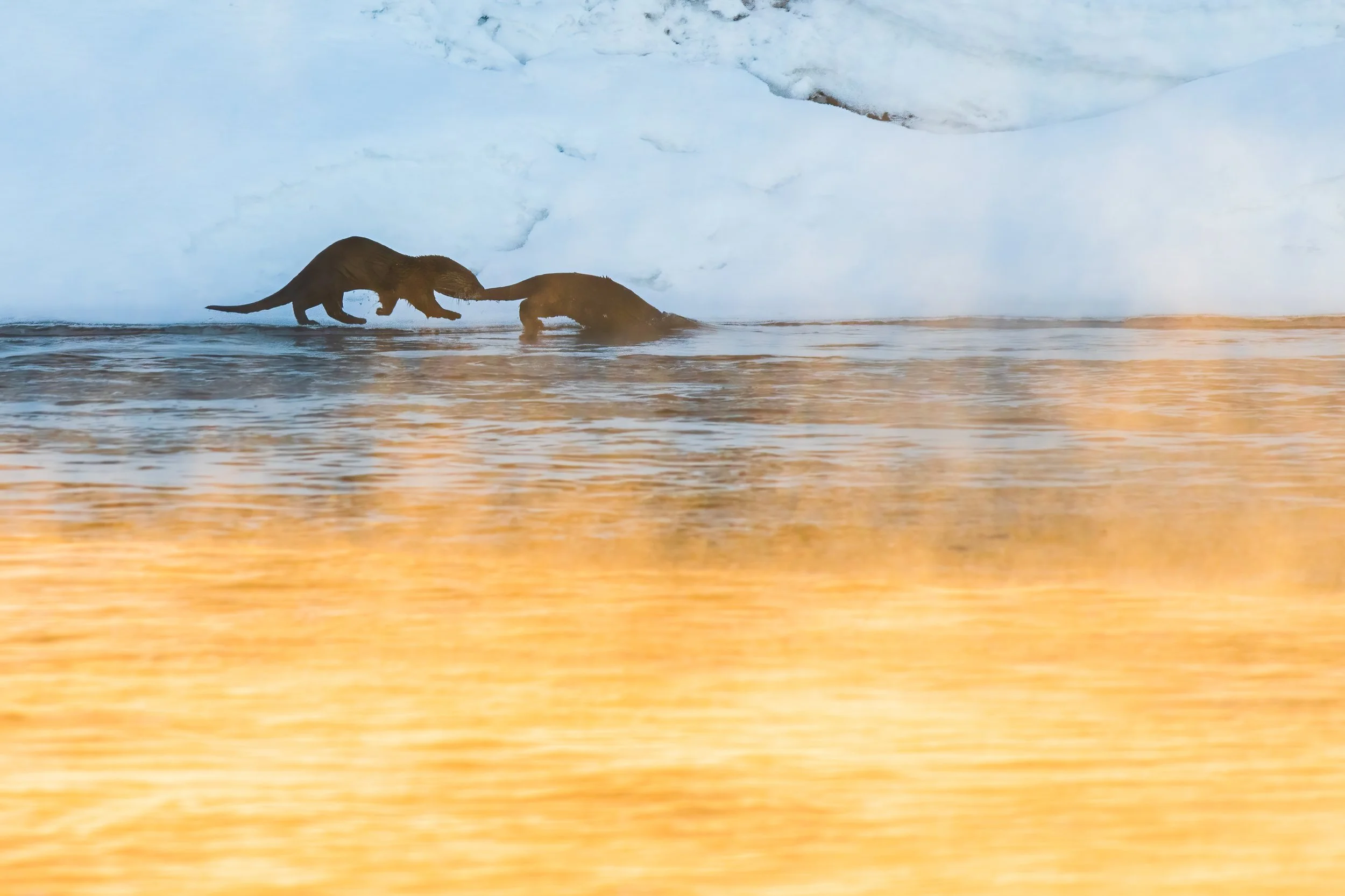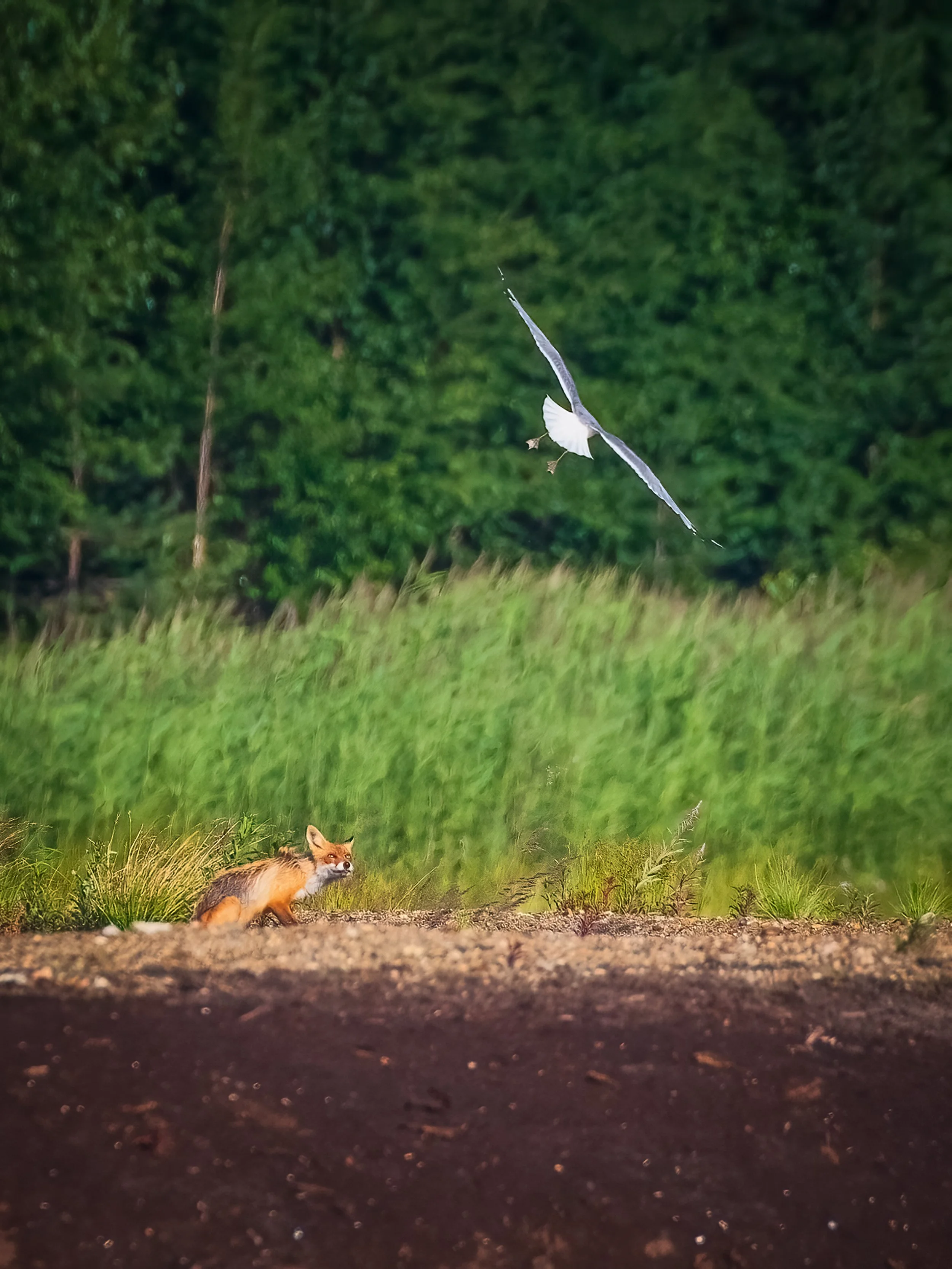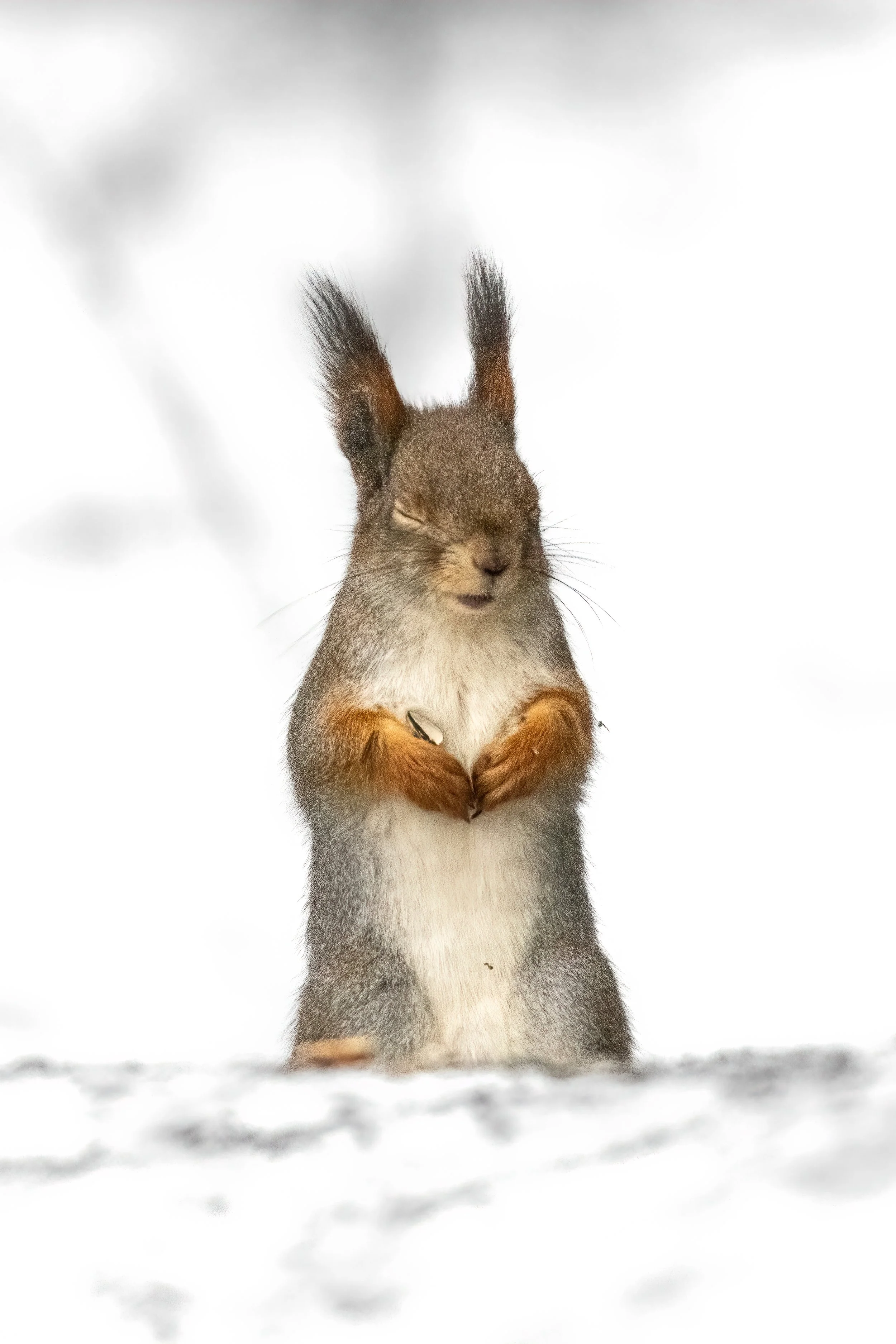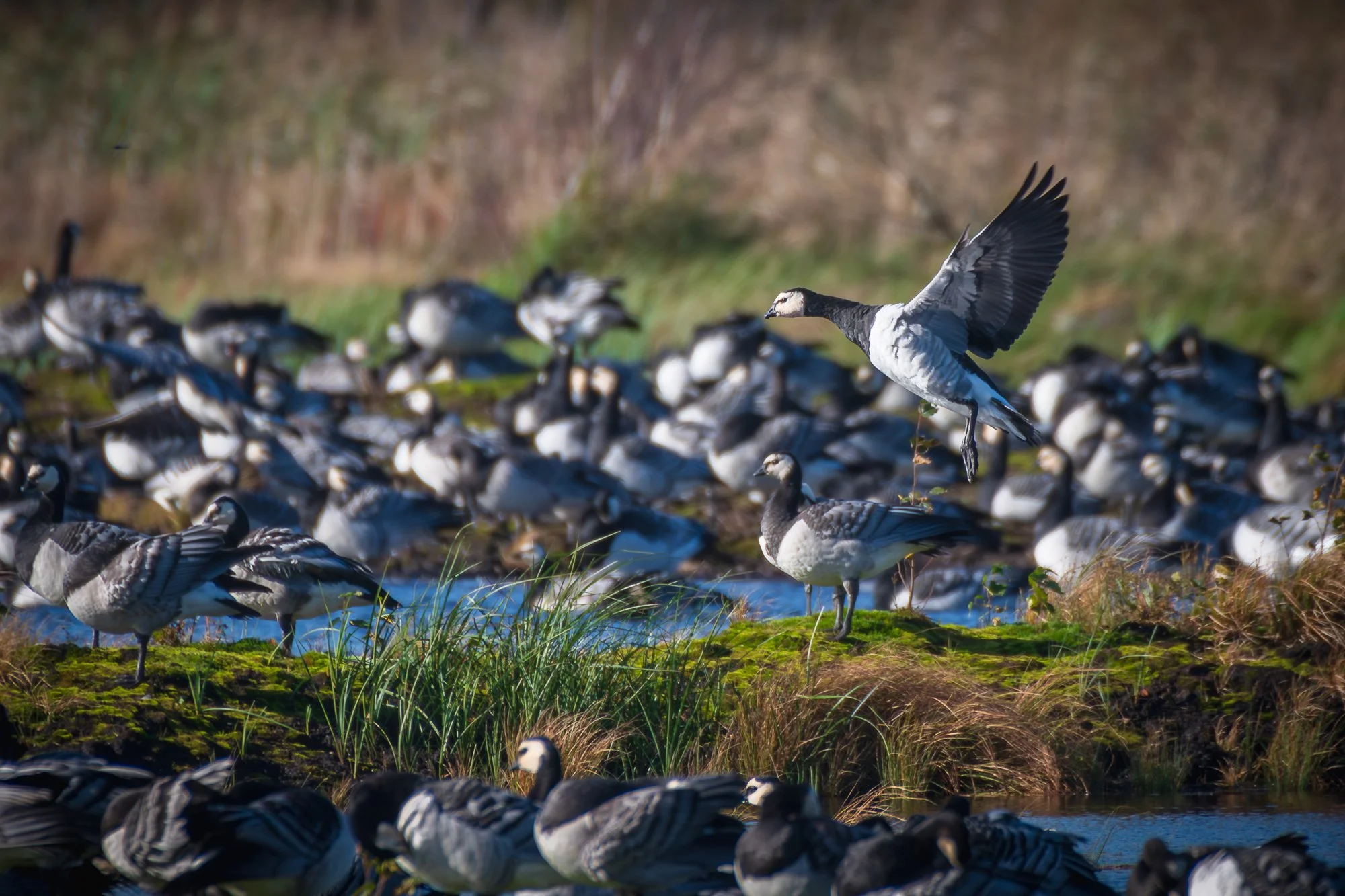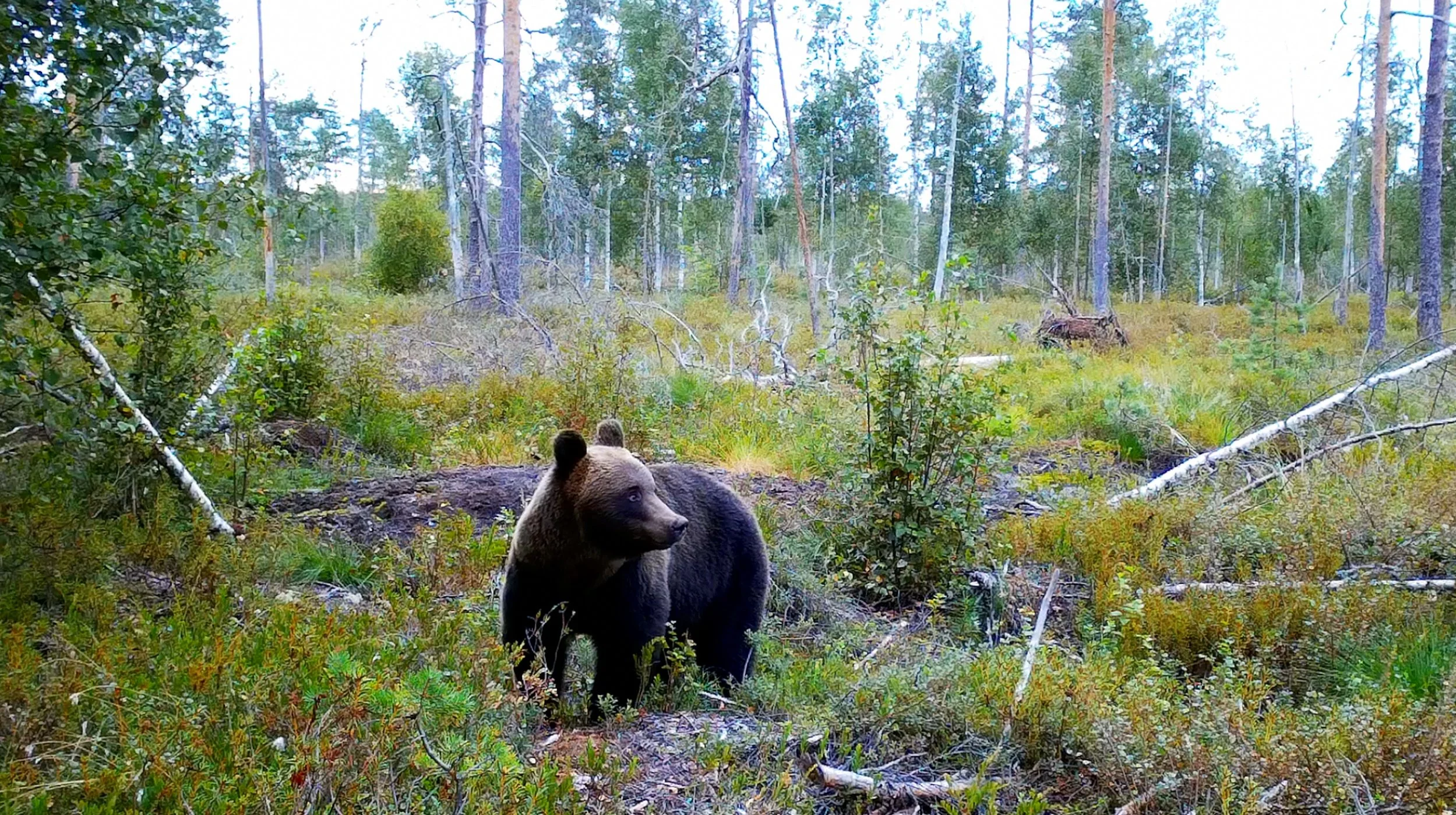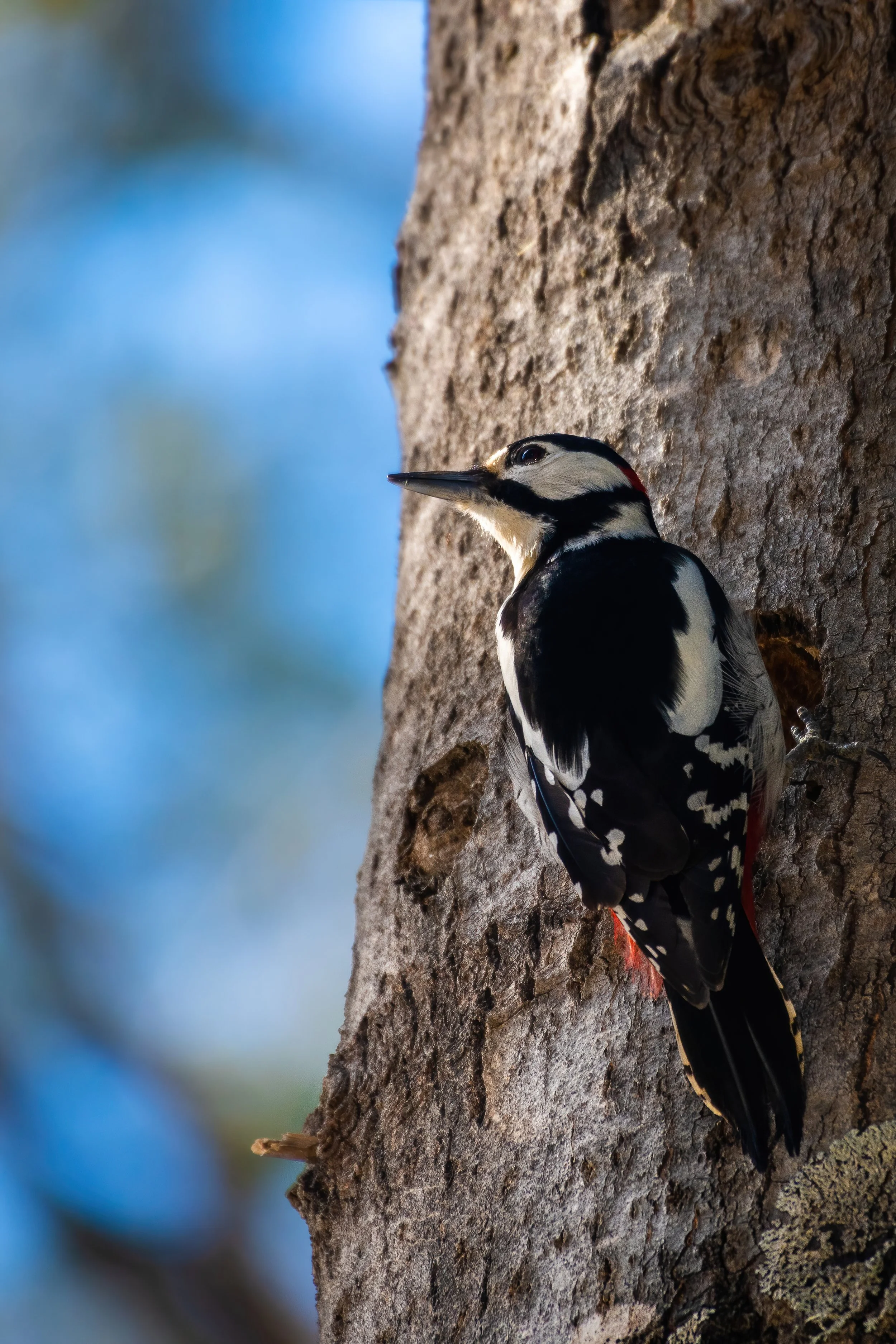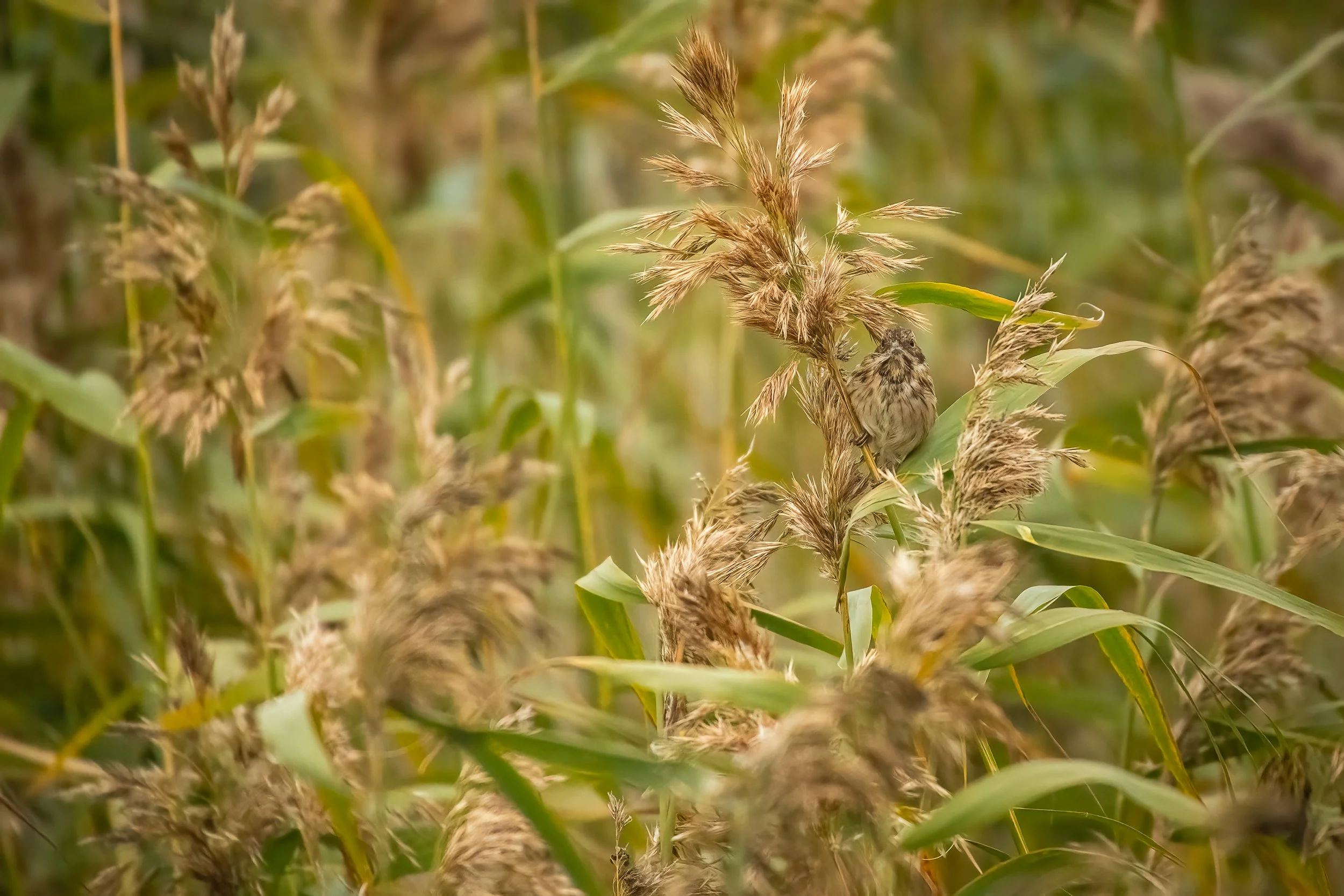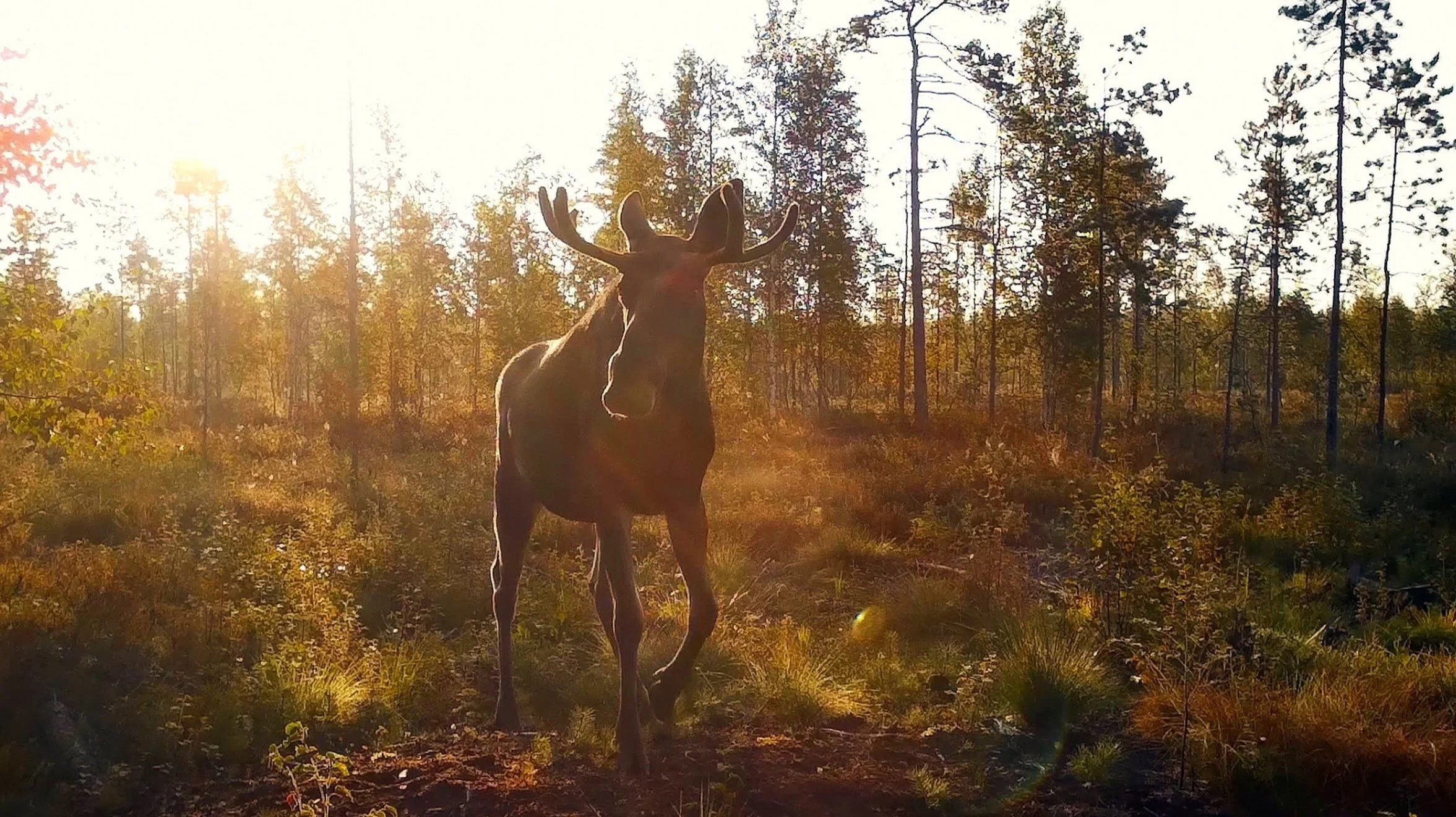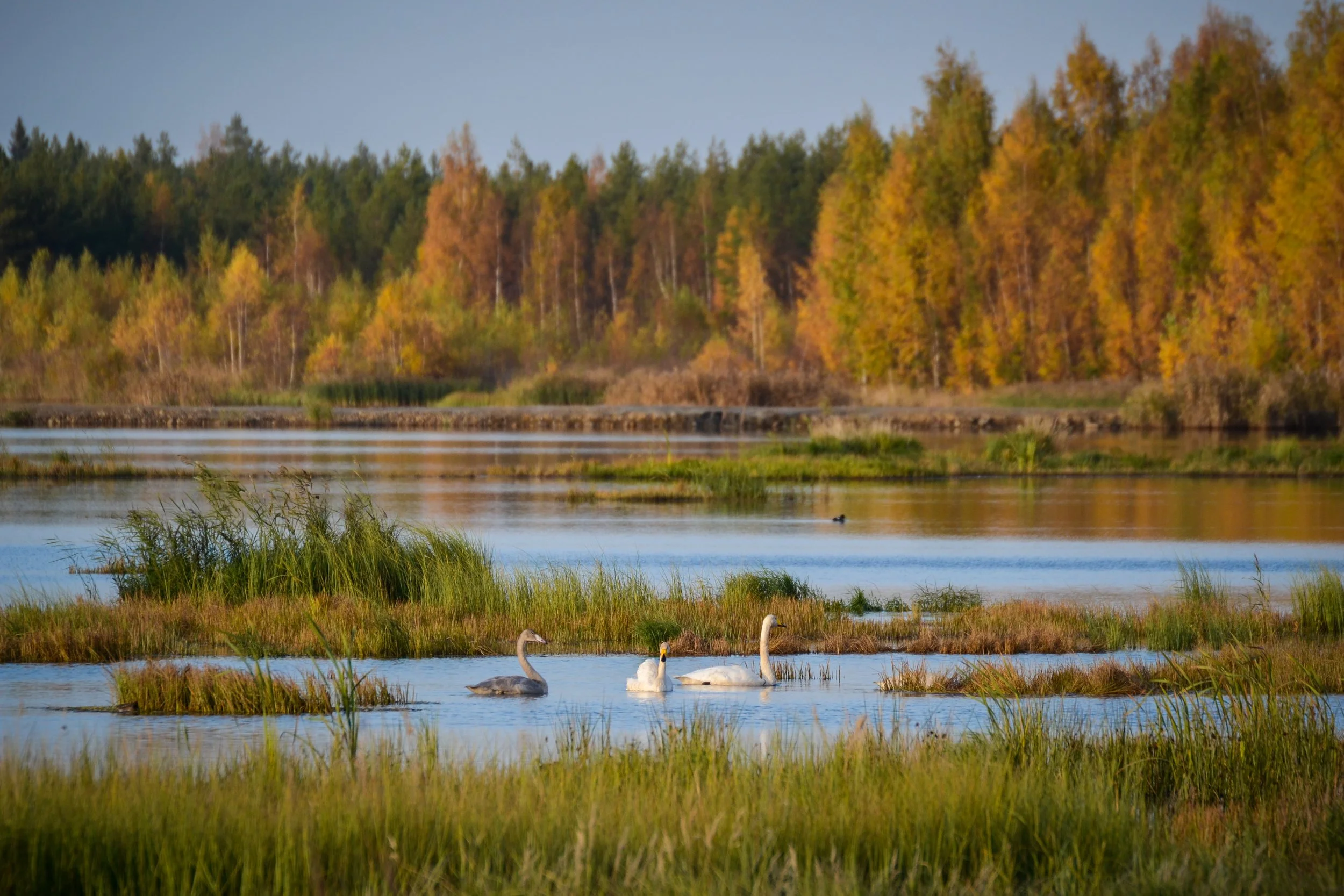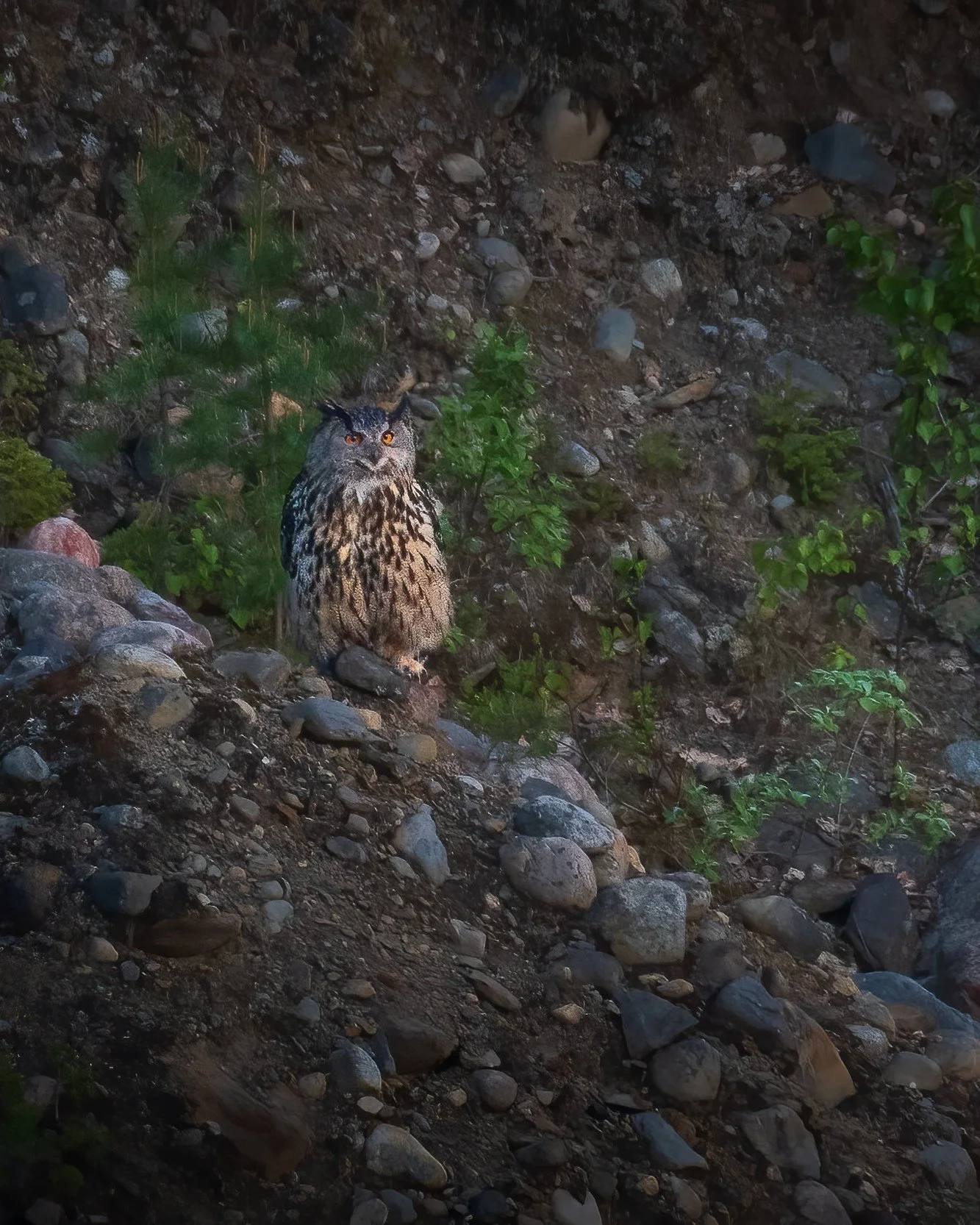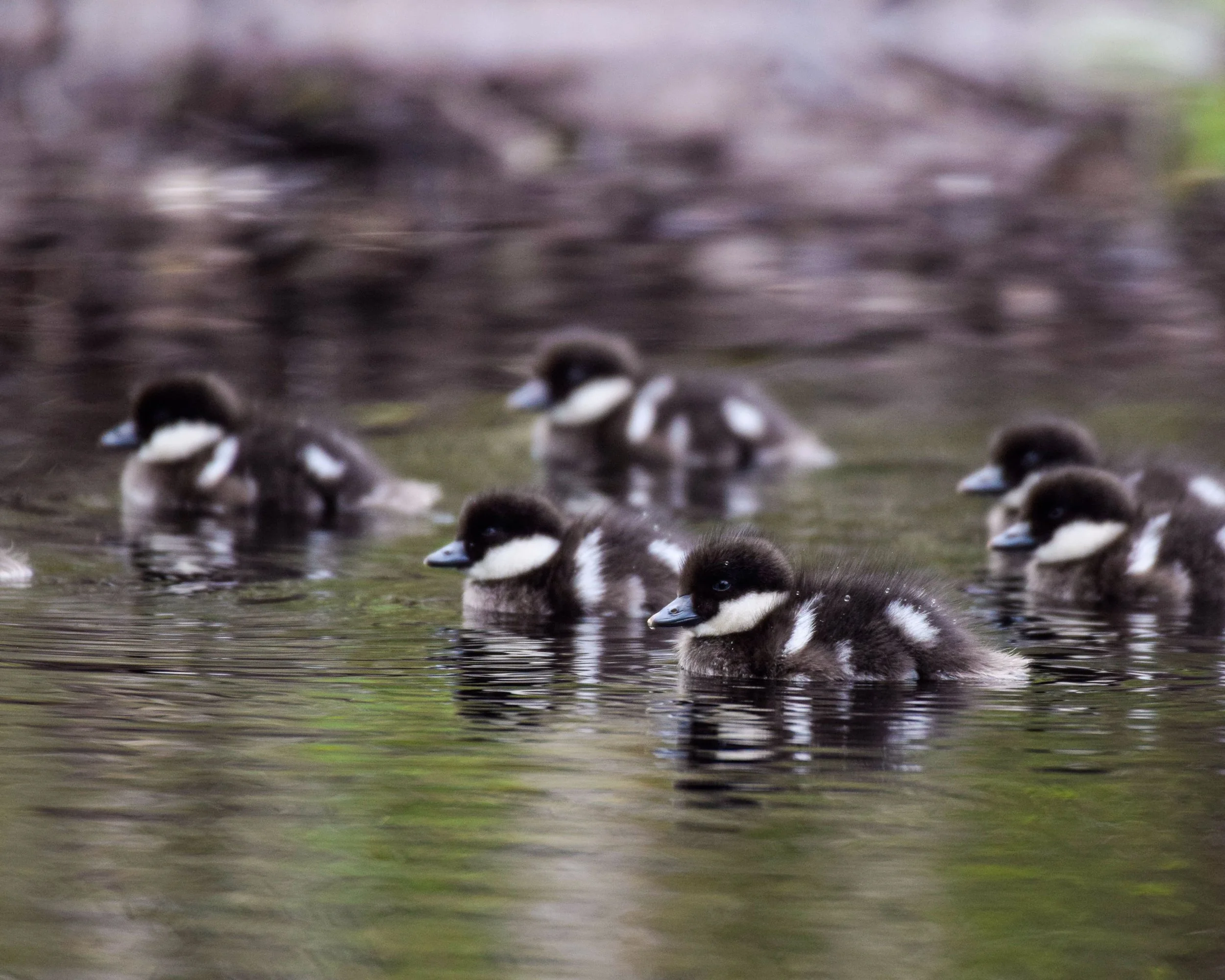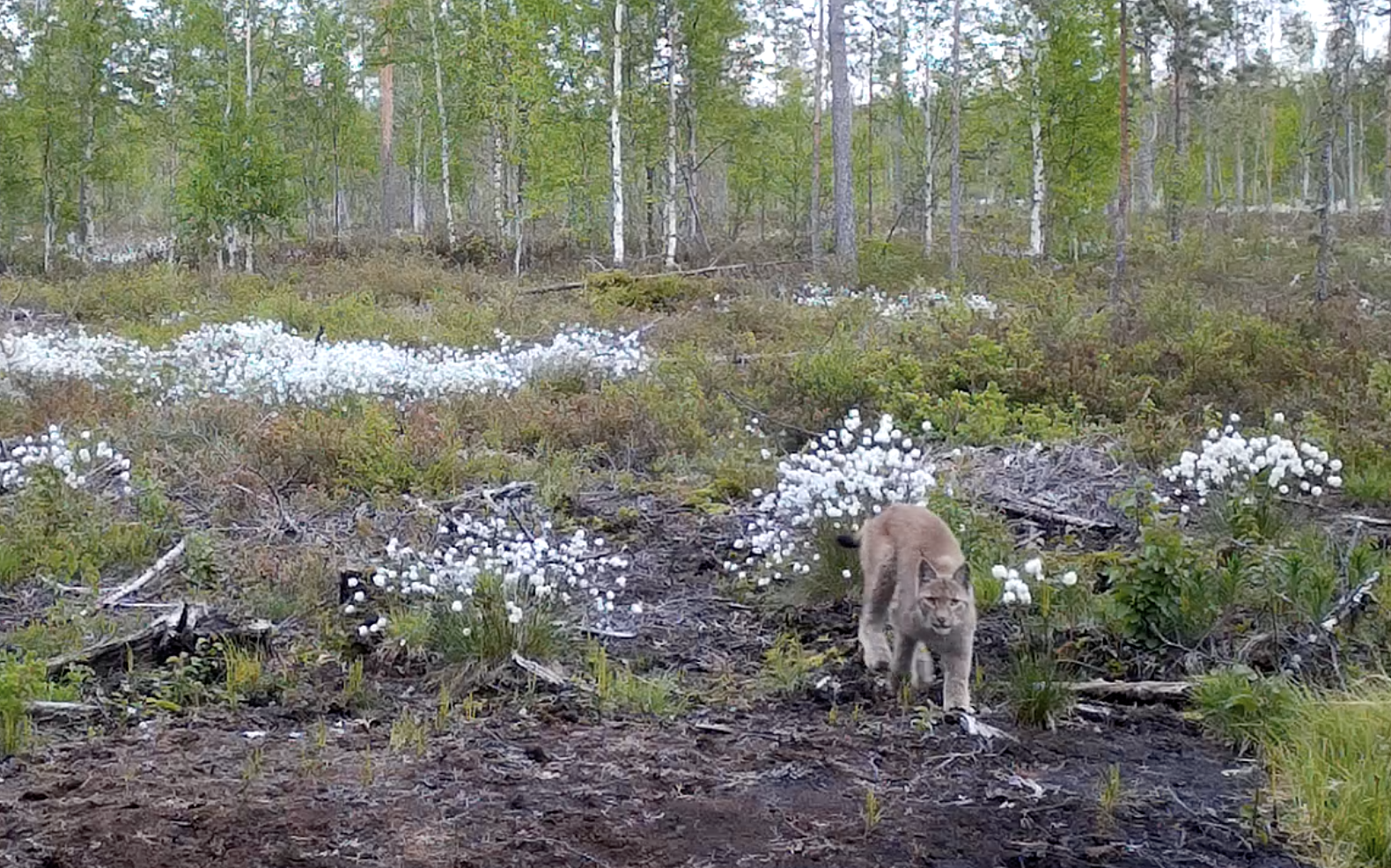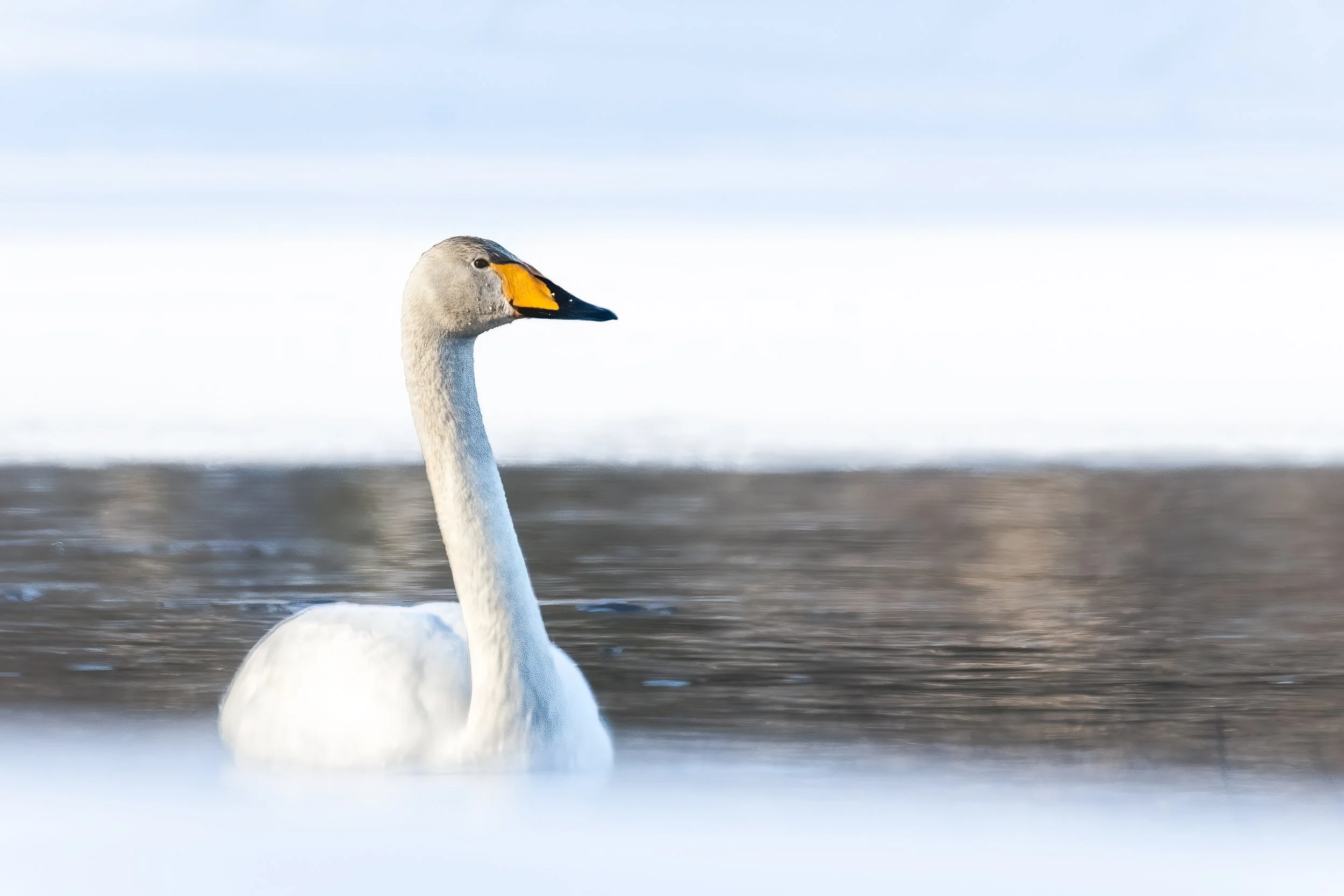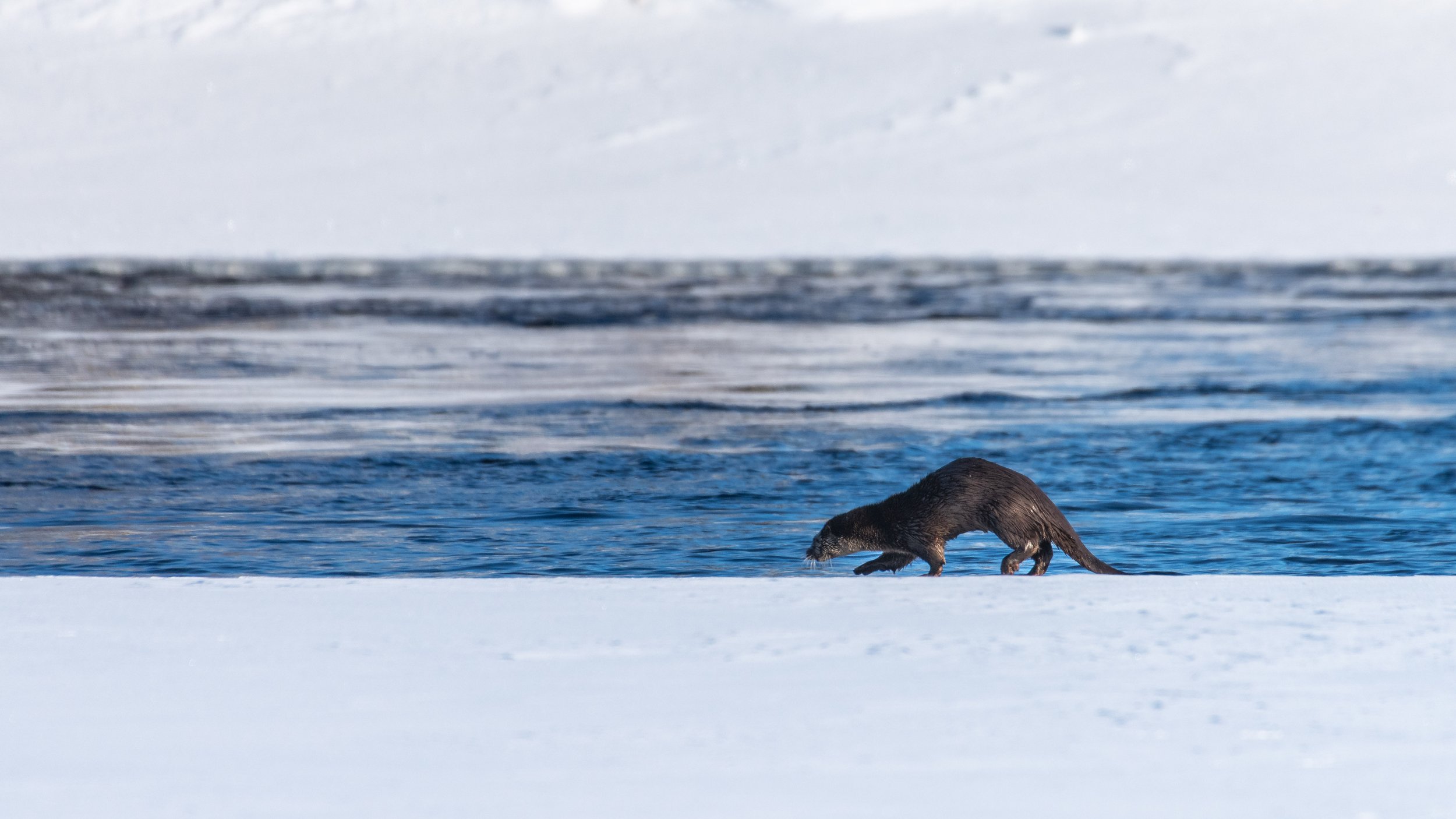
Finland is home to a unique wildlife. Here, biodiversity is adapted to harsh environmental conditions including long, snowy winters. If habitat degradation and climate change have been putting a tremendous pressure on Finland’s fauna and flora, rewilding is now offering solutions allowing them to thrive.
Hooded crow (Corvus corax)
One of the most common residents birds in Finland, this highly intelligent corvid has adapted to various habitats and thrives in urban areas.
Roe deer (Capreolus capreolus) & common crane (Grus grus)
In southwestern Finland, a doe crosses peacefully the Louhineva fen while a crane trumpets in the background. More and more sites are protected and rewilded in Finland, offering ever greater opportunities to observe this kind of breathtaking scene.
Green tiger beetle (Cicindela campestris)
The tiny yet ferocious predator waits patiently for a prey to pass by. The bare peat patches of the Linnunsuo wetland - testimony to the area's mining past - constitute a perfect hunting ground for the iridescent beetle.
Wood sandpiper (Tringa glaerola)
Perched on a tree top, the frightened bird warns of human intruders with loud alarm calls. This wader breeds every year in the Linnunsuo wetland, where it builds its nest in marshy hummocks.
Whooper swan (Cygnus cygnus)
A cygnet hides in the reeds. The national bird of Finland now breeds in the Linnunsuo wetland, after almost disappearing from the country in the 1950s. A beautiful symbol of hope for rewilding.
Eurasian otter (Lutra lutra)
Two playful otters dive into the Pielisjoki River as the sun rises on a cold April Day. Nowadays, this semiaquatic mammal coexists pretty well with humans in Finland, sometimes even thriving in the core of urban areas.
Red fox (Vulpes vulpes) & common gull (Larus canus)
On a warm summer dawn, a skinny fox tries to sneak in the gull colony to steal eggs or chicks, but the patrol scares it away. Breeding in large colonies allows gulls to defend their broods efficiently.
Eurasian red squirrel (Sciurus vulgaris)
A squirrel enjoys seeds left for birds in the protected Kuhasalo forest in Joensuu. This highly adaptable species grows a thicker, grayer coat in winter.
Barnacle goose (Branta leucopsis)
In the autumn, thousands of barnacle geese stop by the Linnunsuo wetland on their migration journey to southern latitudes. Large open wetlands such as this rewilding site are essential habitats to mitigate the impact of environmental changes on migratory birds, as well as to prevent human-wildlife conflicts.
Eurasian brown bear (Ursus arctos arctos)
In a rewilded peatland in North Karelia, a healthy-looking bear inspects the surroundings before heading back to the forest. A central figure for many cultures across the Boreal, the brown bear is maybe the most iconic animal roaming Finnish landscapes.
(trail camera material)
Great spotted woodpecker (Dendrocopos major)
The most common woodpecker in Finland, this bird is usually a resident. In wintertime, it survives on pine and spruce cones from which it extracts seeds using an "anvil" tree.
Raft spider (Dolomedes fimbriatus)
Among the sphagnum moss, the queen of the peatland defends her egg sac. With her 8 eyes, she'll look after it until the hundreds of spiderlings disperse in the wetland.
Great grey owl (Strix nebulosa)
An iconic figure of the taiga, the great grey owl inhabits old forest with neighboring open habitats, such as swamps and meadows. Securing old-growth forest parcels in a rewilding perspective helps protecting this species in Finland.
Common reed bunting (Emberiza schoeniclus) Blending in perfectly with its surroundings, this small passerine is a typical protagonist of rewilded wetlands in Finland. As its name suggests, this bird thrives among the reeds, where it can nest, feed and hide.
Moose (Alces alces)The moose population is currently in a good state in Finland. Still, this huge mammal is also by far the most hunted ungulate in the country. An iconic figure in local cultures, the moose has always been a vital food source for communities to survive long winters.(trail camera material)
Whooper swan (Cygnus cygnus)In the fall, a whooper swan family perfectly completes a postcard-like view of a rewilding finnish landscape.
Eurasian eagle-owl (Bubo bubo)Finland's largest owl depends on healthy forests to nest. This charismatic bird of prey likes to be at the interface of a mosaic of habitats to hunt. When the opportunity arises - like in the case of the individual pictured here - eagle owls reclaim abandoned quarries and open mines. These little-studied anthropic habitats could be integrated to rewilding strategies in Finland.
Eurasian brown bear (Ursus arctos arctos)In a forest recovering from a fire, a brown bear appears like a ghost among the wavy hair-grass at dawn. Bear movements are driven by their opportunistic behavior. These complex animals maintain an instinctive wariness of humans, so that attacks on people are virtually non-existent in Finland.(trail camera material)
Common goldeneye (Bucephala clangula)In Töppösuo, a small wetland unit built as a buffer between a forest and a river, goldeneye ducklings explore their surroundings. This kind of habitat is excellent for this diving duck, who nests in natural tree cavities near water.
Eurasian lynx (Lynx lynx)A young lynx crosses the field of the train camera warily. This feline is alert by nature and usually solitary. A skilled hunter, the lynx consumes a wide range of preys, but particularly appreciates hares and small deer species in Finland.(trail camera material)
Whooper swan (Cygnus cygnus)Most whooper swans start migrating south when the ponds start to freeze, between October and November. Only a minor portion of the population will stay in Finland through the winter. In the spring, swans start coming back before the ice and snow are gone and claim their breeding grounds early on.

